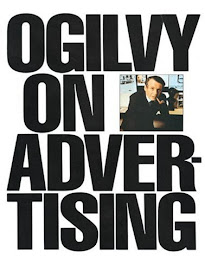 philippine population is only at 80 million. at 600 million a day, it means on average, including babies who were just born, filipinos sent 7.5 texts to each other.
philippine population is only at 80 million. at 600 million a day, it means on average, including babies who were just born, filipinos sent 7.5 texts to each other.the country reached that phenomenon through the brilliant marketing effort of the telcos in the country, the top two, smart and globe. smart is the dominant leader and could largely be credited for making what the mobile industry is in the country now. they pioneered best value texting, costing only P1.00 per text (US$0.02).
at that price, sending text easily became very pervasive so much so that a new form of written, err, texting language evolved, to the horror of the country's english and filipino professors. from the written, that has jumped into the spoken language as well.
one of that is this smart telco ad campaign where they use the tagline "me na me" ("it's very much me"). the english word "me" is being substituted to the pilipino word "ako" (same meaning as the english "me"). you say "tulog na me" ("i will already sleep") rather than "tulog na ako". it's youth-speak, the slang that teen-agers and young people use. it's not yet as pervasive in the spoken language, but it is used often in text speak or when you send text.
smart is the dominant leader among the mobile phone service brands. their consumer base is truly across the board and among the competing telcos, probably is the closest to the general profile of the philippine population where a large portion belongs to the lower socio-eco class.
being the dominant leader and having a consumer base with a large mass base, smart can rightfully use and own a tagline like "me na me" ("it's very much me"). smart is the cellphone of the masses, and that is a compliment to their marketing savvy.
the only problem is the commercial that they aired uses that tagline.
the ad uses 4 of the country's hottest celebrities - piolo pascual, the present matinee idol and heartthrob; angel locsin, one of the most beautiful and most popular actress and also a heartthrob; and gerald alcantara and kim chiu the new and up and coming superstars on the footsteps of piolo and angel. aside from being extremely famous and top on the list, they are also extremely rich.
and that is where the disconnect begins. the target market is the broad based consumers, the masa. the tagline, "me na me", is being expressed in the actual language they use in their texting lives. that means that will pull in empathy and will ring very true among their target market.
while these very popular and very rich celebrities in the ads are their idols, these celebrities are not who the target audience are. they idolize them, they can even aspire and dream to be like them, but they cannot truthfully say these celebrities are "me na me". they know the lifestyles these celebrities have is not their lifestyle. they know they live in two very different worlds. aspiration and reality are two very different things and one of the two often times do not become a reality.
it might look cute, but come on, piolo pascual will not use a pre-paid card for his cellphone service as it is depicted in the tv ad. he has a post paid subscription where he probably pays on a monthly basis the amount equivalent to two to three month's salary of an average wage earner in the country.
the use of not 1 but actually 4 celebrities is one heck of a thrill when the ads were conceptualized and developed. the crafting of the line "me na me" could have been really exciting. but merging the two into one ad without even trying to bridge the inherent problems each one had puts into play believability issues and makes this ad campaign a WAWAM!
-------
Text messages soar in June–NTC
By Darwin G. Amojelar, Reporter
DESPITE soaring consumer prices, the average number of text messages sent per day rose by a fifth as of June, the National Telecommunications Commission said Friday.
Edgardo Cabarios, NTC director for common carrier and authorization, said the agency estimated about 600 million texts per day as of June this year, higher by 20 percent than the average of 500 million texts per day in 2006.
Edgardo Cabarios, NTC director for common carrier and authorization, said the agency estimated about 600 million texts per day as of June this year, higher by 20 percent than the average of 500 million texts per day in 2006.
“The system is processing 600 million texts a day,” Cabarios told reporters and calculated that a subscriber sent 10 texts per day from only seven texts two to three years ago.
article parsed, read in full here : http://www.manilatimes.net/national/2008/aug/30/yehey/business/20080830bus6.html













No comments:
Post a Comment
we encourage everyone to post a comment, their own analysis or views on any of the posts in WAWAM!
we have put all comments to be moderated to make it easy to monitor them and so that WAWAM! can respond to them.
we will not tolerate rudeness or idiocy in this blog. comments that contain personal attacks on any person or posters in this blog will be rejected.
otherwise, we will allow all other comments.